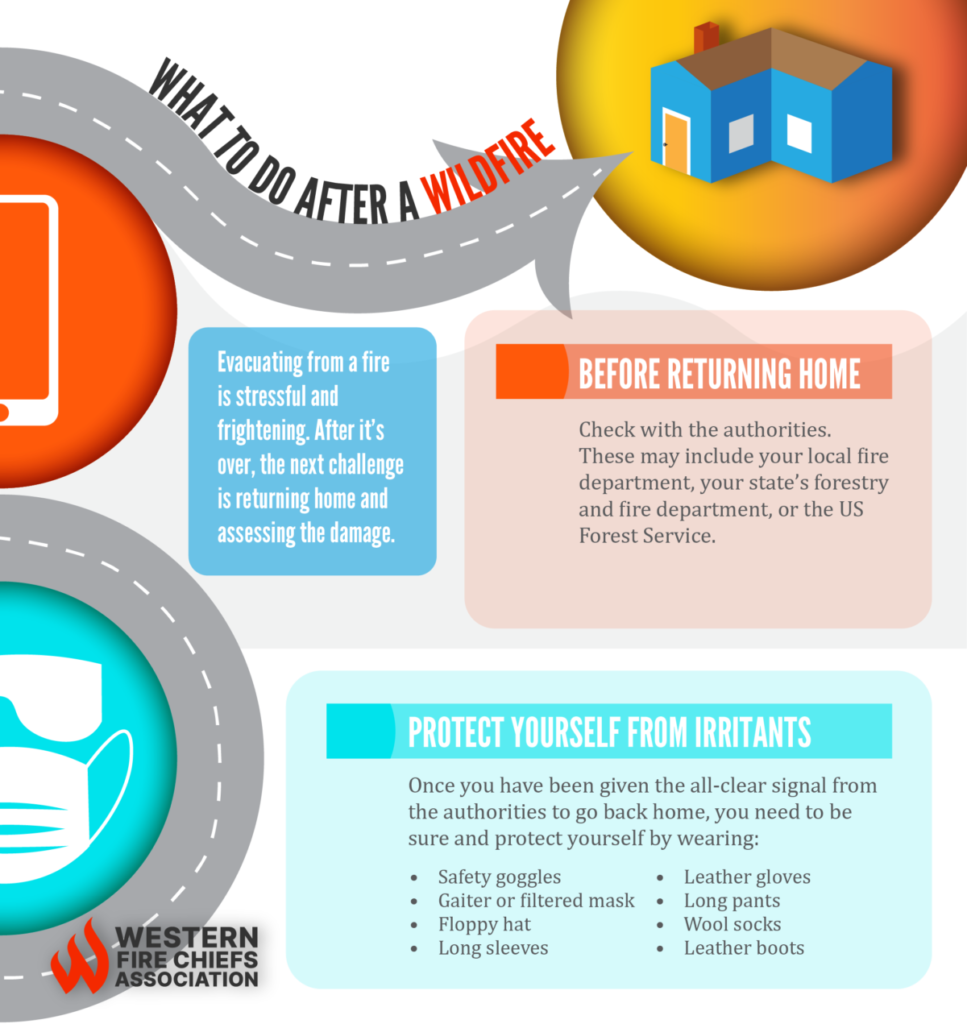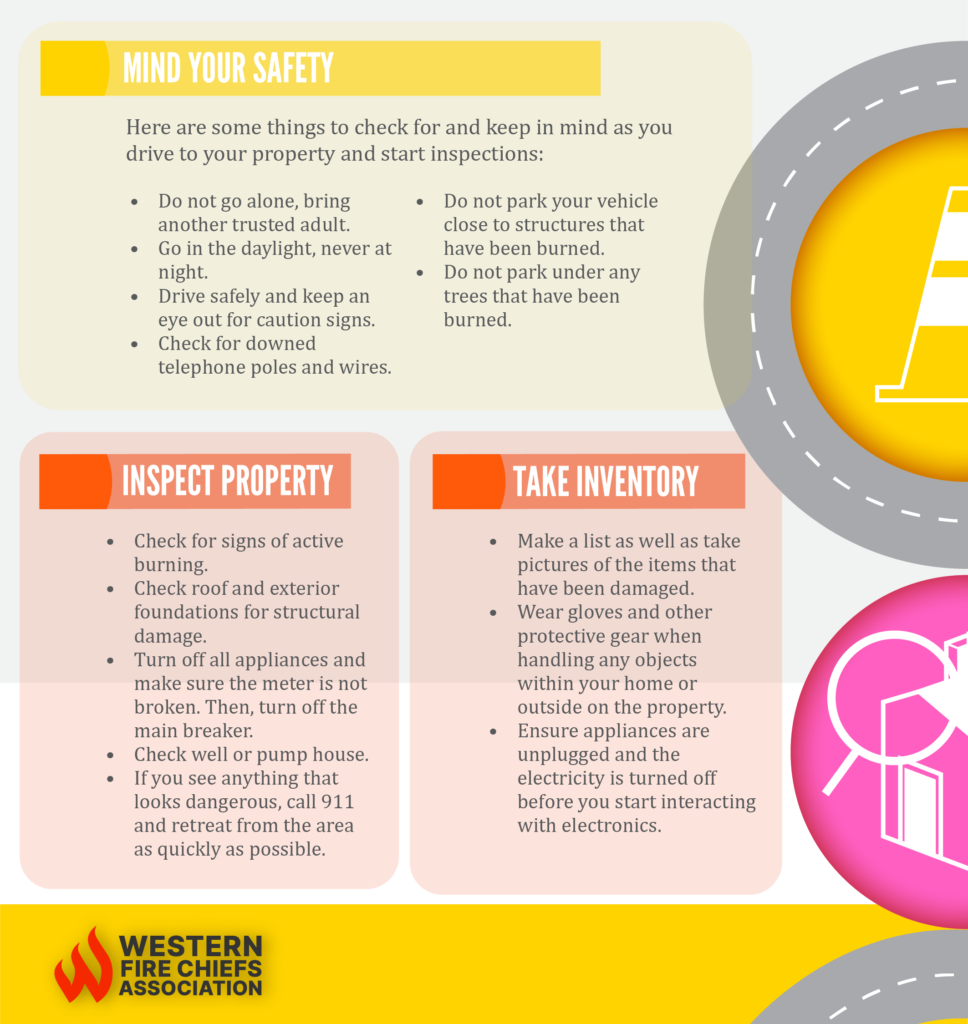Fire Pit Safety Tips
Stay safe around the campfire with tips from the Western Fire Chiefs Association. Learn essential precautions and practices for a worry-free outdoor campfire.
Evacuating from a fire can be overwhelming and stressful. Learn what to do after a wildfire with expert guidance from the Western Fire Chiefs Association (WFCA).
Published:November 22, 2022
Edited:March 4, 2024
Evacuating from a fire can be overwhelming and stressful. Learn what to do after a wildfire with expert guidance from the Western Fire Chiefs Association (WFCA).
If a wildfire has recently passed through or near your home, or if you are preparing in case one does, this article will teach you what to do in the aftermath.
This is not a subject to take lightly. The destruction that a fire wreaks can still be dangerous to your health and well-being long after the flames have been extinguished. That is why it is essential to know and follow proper procedures when it is safe to return to, inspect, and inventory your property. We explain how to do just that in the sections below.
Before you return to your property after a fire, you must check with the authorities.

Once you have been given the all-clear signal from the authorities to go back home, you must be sure to protect yourself from irritants.
Irritants that are left over from a wildfire include ash and smoke. Despite the fact that your property is now considered “safe,” these elements may still linger, especially if any structures were burned down or partially damaged.
Below is a list of clothes and accessories to wear that will provide you with maximum protection, particularly for your eyes, nose, and throat. These are the same accouterments we recommend you wear to keep you safe while you evacuate from a wildfire.1
Here are some things to check for and keep in mind as you drive to your property and start inspecting the land and structures.
Remember, your safety is the most important thing to worry about. Do not take any unnecessary risks.

Once you have arrived and parked your vehicle a safe distance away from the structures on your property, inspect the damage. Be sure to follow these steps, as recommended by the California Department of Forestry and Fire Protection (CAL FIRE).2
The last step in your process of returning home after a wildfire is to take inventory of your belongings for insurance purposes.
Stay safe around the campfire with tips from the Western Fire Chiefs Association. Learn essential precautions and practices for a worry-free outdoor campfire.
Discover essential firework safety tips to ensure a dazzling display without accidents. Learn how to celebrate responsibly with expert guidance from WFCA.
Explore the role of AI in wildfire prediction with guidance from the WFCA. Learn how advanced algorithms and data analytics enhance early detection and response.